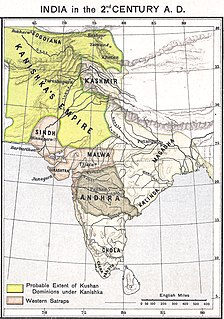 W
WThe Kushan Empire was a syncretic empire, formed by the Yuezhi, in the Bactrian territories in the early 1st century. It spread to encompass much of Afghanistan, and then the northern parts of the Indian subcontinent at least as far as Saketa and Sarnath near Varanasi (Benares), where inscriptions have been found dating to the era of the Kushan Emperor Kanishka the Great. Emperor Kanishka and the Kushans in general were great patrons of Buddhism, as well as Zoroastrianism. They played an important role in the establishment of Buddhism in the Indian subcontinent and its spread to Central Asia and China.
 W
WThe Airtam Frieze is a sculpture in stone of women, musicians from Kushan Bactria dating to the 1st or 2nd century A.D. Five musicians are represented among acanthas leaves, playing double-flute, drum, lute, harp and cymbals. The sculpture has been thought to have been part of the walls or the entrance of a Buddhist temple.
 W
WAkchakhan-Kala, or Akcha-khan Kala, also named after the locality Kazakly-Yatkan/ Kazakl'i-Yatkan, in modern Karakalpakstan, Uzbekistan, was an ancient fortress in Chorasmia built in the 4th/ 3rd century BCE and occupied until it was despoiled in the 2nd century CE. It is part of the "Fifty fortresses oasis" in modern-day Uzbekistan. The abandonment of Akchakhan-Kala was apparently followed by the establishment of the new capital of Toprak-Kala, 14 km to the northeast.
 W
WArdoksho, also Romanised as Ardochsho, Ardokhsho and Ardoxsho was a female deity of the Kushan Empire, in Central and South Asia during the early part of the 1st millennium CE.
 W
WAyaz-Kala is an archaeological site in Northern Uzbekistan, built between the 4th century BCE and the 7th century CE. Situated on a hilltop overlooking the Kyzylkum Desert, the site encompasses the ruins of an ancient Khorezm fortress.
 W
WBalalyk tepe, Uzbekistan, is a Central Asian archaeological site with many mural paintings. It is generally dated a bit later than the painting at Dilberjin, from the late 5th century to the early 7th century CE, or from the end of the 6th century to the early 7th century CE. The paintings of Balalyk Tepe are part of a "Tokharistan school", which also includes Adzhina-tepe and Kafyr-kala.
 W
WThe Begram ivories are a group of over a thousand decorative plaques, small figures and inlays, carved from ivory and bone, and formerly attached to wooden furniture, that were excavated in the 1930s in Bagram (Begram), Afghanistan. They are rare and important exemplars of Kushan art of the 1st or 2nd centuries CE, attesting to the cosmopolitan tastes and patronage of local dynasts, the sophistication of contemporary craftsmanship, and to the ancient trade in luxury goods.
 W
WThe Bhutesvara Yakshis, also called the Bhutesar Yakshis are a series of yakshi reliefs on a railing, dating to the 2nd century CE during the time of the Kushan Empire. The reliefs were found in the Bhutesar mound, around the remains of a Buddhist stupa, outside Mathura, and are now located in the Indian Museum in Kolkata, with three pillars, and three more pillars and one fragment in the Mathura Museum. They are an important example of Mathura art, of which these and other yakshi figures are "perhaps the best known examples".
 W
WThe Buddha statue of Vasudeva I is a fragment of a statue of the Buddha, belonging to the art of Mathura, and bearing an inscription in the name of the Kushan Empire emperor Vasudeva I.
 W
WChhu seems to have been a late Kushan Empire ruler, who ruled from 310 to 325 CE. His coinage is very similar to that of his near-contemporary Vasudeva. His rule corresponds to the last days of the Kushan Empire, before the conquest by Kidara.
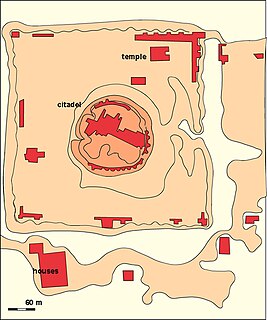 W
WDilberjin Tepe, also Dilberjin or Delbarjin, is the modern name for the remains of an ancient town in modern (northern) Afghanistan. The town was perhaps founded in the time of the Achaemenid Empire. Under the Kushan Empire it became a major local centre. After the Indo-Sassanids the town was abandoned.
 W
WFayaz Tepe, also Fayoz-Tepe, is a Buddhist archaeological site in the Central Asia region of Bactria, in the Termez oasis near the city of Termez in southern Uzbekistan. The foundations of the site date to the 1st century CE, with a peak of activity around the 3rd and 4th centuries during the Kushan period, before experiencing a fatal decline around the 5th century CE, probably with the invasion of the Kushano-Sassanian, whose coinage can be found at the nearby site of Kara Tepe.
 W
WGadahara, sometimes Gadakhara, is a name appearing on numerous coins at the end of the Kushan Empire or the beginning of the rule of the Kidarite Huns in the area of Central and Western Punjab in India, in the period circa 350-375 CE.
 W
WThe Guldara stupa is not far from the village of Guldara in the Kabul Province of Afghanistan set on the summit of a high hill at the end of the Valley of Guldara. It appears to have been established in the late 2nd century CE, as it contained six gold coins of the Kushan king Vima Kadphises ruled c. 113-127 CE, the father of Kanishka I, and two from Huvishka, Kanishka's son, who is thought to have ruled c. 150-190 CE. None of the coins appear very worn, and the two Huvishka coins look to be in almost mint condition.
 W
WGuldursun-Kala, also Guldursun Qala, in modern Karakalpakstan, Uzbekistan, was an ancient fortress in Chorasmia built in the 12th century CE. It is one of the largest fortresses of Khwarezm, with perimeter walls of about 1 kilometer in total length, and an internal area of about 6.4 hectares.
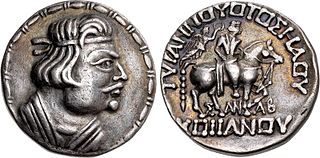 W
WHeraios was apparently a king or clan chief of the Kushans, one of the five constituent tribes of the Yuezhi, in Bactria, in the early 1st century CE.
 W
WHuvishka was the emperor of the Kushan Empire from the death of Kanishka until the succession of Vasudeva I about thirty years later.
 W
WKujula Kadphises was a Kushan prince who united the Yuezhi confederation during the 1st century CE, and became the first Kushan emperor. According to the Rabatak inscription, he was the great grandfather of the great Kushan king Kanishka I. He is considered the founder of the Kushan Empire.
 W
WKanishka I, or Kanishka the Great, an emperor of the Kushan dynasty in the second century, is famous for his military, political, and spiritual achievements. A descendant of Kujula Kadphises, founder of the Kushan empire, Kanishka came to rule an empire in Bactria extending to Pataliputra on the Gangetic plain. The main capital of his empire was located at Puruṣapura in Gandhara, with another major capital at Kapisa.
 W
WKanishka II was one of the emperors of the Kushan Empire from around 225–245 CE. He succeeded Vasudeva I who is considered to be the last great Kushan emperor.
 W
WKanishka III, was a Kushan emperor who reigned for a short period around the year 268 CE. He is believed to have succeeded Vasishka and was succeeded by Vasudeva II. He ruled in areas of Northwestern India.
 W
WThe Kanishka casket or Kanishka reliquary, is a Buddhist reliquary made in gilded copper, and dated to the first year of the reign of the Kushan emperor Kanishka, in 127 CE. It is now in the Peshawar Museum in the historic city of Peshawar, Pakistan.
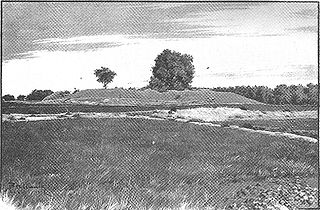 W
WThe Kanishka stupa was a monumental stupa established by the Kushan king Kanishka during the 2nd century CE in today's Shaji-ki-Dheri on the outskirts of Peshawar, Pakistan.
 W
WKara Tepe is a Buddhist archaeological site in the Central Asia region of Bactria, in the Termez oasis near the city of Termez in southern Uzbekistan. The foundations of the site date to the 1st century CE, with a peak of activity around the 3rd and 4th centuries during the Kushan period, before experiencing a fatal decline around the 5th century CE, probably with the invasion of the Kushano-Sassanian, whose coinage can be found on the site.
 W
WKhalchayan is an archaeological site, thought to be a small palace or a reception hall, located near the modern town of Denov in Surxondaryo Region of southern Uzbekistan. It is located in the valley of the Surkhan Darya, a northern tributary of the Oxus.
 W
WKipunada, also Kipanadha, was probably the last ruler of the Kushan Empire around 335-350 CE. He is known for his gold coinage. He succeeded Shaka I. Kipunada was probably only a local ruler in the area of Taxila, in western Punjab, and he may have been a subject of Gupta Emperor Samudragupta.
 W
WKoi Krylgan Kala is an archaeological site located outside the village of Taza-Kel'timinar in the Ellikqal'a District in the Republic of Karakalpakstan, an autonomous republic of Uzbekistan. In ancient times, it was sited along a canal in the Oxus delta region.
 W
WIn the coinage of the North Indian and Central Asian Kushan Empire the main coins issued were gold, weighing 7.9 grams, and base metal issues of various weights between 12 g and 1.5 g. Little silver coinage was issued, but in later periods the gold used was debased with silver.
 W
WShaka may have been one of the last rulers of the Kushan Empire around 325-345. He may have succeeded Vasudeva II. There is a group of Kushan gold coins that all carry the Brahmi legend Shaka in the right field, in the same place where Vasudeva II's coins read Vasu, so it is natural to suppose that perhaps Shaka was the name of the king who issued these coins. A further support for this idea is that there is a mention of one "Devaputra Shahi Shahanshahi Shaka Murunda" in Samudragupta's famous Allahabad inscription, as one of the rulers who paid him homage. In this context, Shaka could be a title, it could refer to a tribe, or it could be a personal name. In any case, it seems to be related to the Shaka coins. Unfortunately, we don't know the date of the Allahabad inscription, so the best guess on dating Shaka is c. mid-4th century.
 W
WKyzyl-Kala, also Qyzyl Qala, in modern Karakalpakstan, Uzbekistan, was an ancient fortress in Chorasmia built in the 1st-4th century CE. The small fortress of Kyzyl-Kala is located near Toprak-Kala, about 1 km to the west, and was also built in the 1st-4th century CE, possibly as a fortified defense for the site of Toprak-Kala. Kyzyl-Kala was once restored in the 12th century CE. It has also been the subject of a modern renovation program, with the objective of showing what a fortress looked like originally. It is part of the "Fifty fortresses oasis" in modern-day Uzbekistan. It was last occupied by Muhammad II of Khwarazm, before it fell to the Mongol conquest of the Khwarazmian Empire.
 W
WMahi was a Kushan ruler, whose reign is dated to circa 300-305 CE. He probably succeeded Vasudeva II, and his successor was Shaka. Mahi was among the last Kushan Emperors, before they were overrun by the Kidarites.
 W
WOesho was a Kushan deity represented on Kushan coins. He was apparently one of the titular deities of the dynasty. He is generally identified with Shiva.
 W
WQila Mubarak, is a historical monument in the heart of the city of Bathinda in Punjab, India. It is recognized as monument of national importance and maintained by Archaeological Survey of India. It has been in existence from 1100-1200 AD in its current place and is the oldest surviving fort in India. It was here that Razia Sultan, the first woman to take charge of the Delhi throne was incarcerated on her defeat and dethroned. The bricks of the fort date back to the Kushana period when emperor Kanishka ruled over Northern India/Bactria. Raja Dab, along with emperor Kanishka, is believed to have built the fort.
 W
WThe Rabatak inscription is an inscription written on a rock in the Bactrian language and the Greek script, which was found in 1993 at the site of Rabatak, near Surkh Kotal in Afghanistan. The inscription relates to the rule of the Kushan emperor Kanishka, and gives remarkable clues on the genealogy of the Kushan dynasty. It dates to the 2nd century CE.
 W
WRang Mahal is a village and an ancient Kushan era archaeological site on Suratgarh-Hanumangarh road in Suratgarh tehsil of Sri Ganganagar district in the Indian state of Rajasthan. It can be reached from Hanumangarh, Pilibangan, Suratgarh. Suratgarh is the nearest major railway station to Rang mahal village.
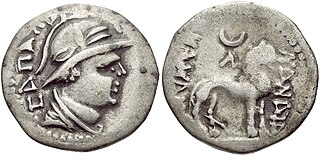 W
WSapadbizes (Σαπαδβιζης), also Sapalbizes or Sapaleizis, was a ruler of western Bactria, sometimes linked to the Yuezhi. He is known only from his coins, which are rather rare, and are dated to circa 20 BC - 20 AD. Two clues provide an approximate date for this ruler. He is believed to have overstruck the coins of Phraates IV of Parthia, secondly his coins are of good silver. This places him after Phraates IV and before the debasement of coinage in Northwest India. He is not the only ruler of his dynasty known. Several other coins imply that Sapadbizes was preceded by at least one, and possibly two other rulers. It is likely that Sapadbizes and these other rulers were descendants of tribes who had invaded Bactria and imitated the coins of the last Greco-Bactrian kings. Though it is clear from the coins, and the evidence of Chinese chroniclers that at this time Sapadbizes was an ally or dependent of Parthia, nothing is known of the succession after Sapadbizes. However, scholars surmise that his kingdom was conquered by Kujula Kadphises, during the latter's war with Parthia, and absorbed into the Kushan Empire, probably about the year 30 AD.
 W
WSurkh Kotal, also called Chashma-i Shir or Sar-i Chashma, is an ancient archaeological site located in the southern part of the region of Bactria, about 18 km north of the city of Puli Khumri, the capital of Baghlan Province of Afghanistan. It is the location of monumental constructions made during the rule of the Kushans. Huge temples, statues of Kushan rulers and the Surkh Kotal inscription, which revealed part of the chronology of early Kushan emperors were all found there. The Rabatak inscription which gives remarkable clues on the genealogy of the Kushan dynasty was also found in the Robatak village just outside the site.
 W
WTavka Kurgan is an ancient fortress and archaeological site near Shirabad, Uzbekistan. It is especially famous for some frescoes dated to the 5th-6th century CE, several of them located in the Archaeological Museum of Termez. One of these paintings, the so-called "Princess of Tokharistan", is actually thought to represent a hunter.
 W
WToprak-Kala, in modern Karakalpakstan, Uzbekistan, was an ancient palace city and the capital of in Chorasmia in the 2nd/3rd century CE, where wall paintings, coins and archives were discovered. Its history covers a period from the 1st to the 5th century CE. It is part of the "Fifty fortresses oasis" in modern-day Uzbekistan.
 W
WVāsudeva I was a Kushan emperor, last of the "Great Kushans." Named inscriptions dating from year 64 to 98 of Kanishka's era suggest his reign extended from at least 191 to 232 CE. He ruled in northern India, and still minted in coins in Balkh (Bactria) as well, although he probably had to deal with the rise of the Sasanians and the first incursions of the Kushano-Sasanians in the northwest of his territory.
 W
WVasudeva II was a Kushan emperor who ruled c. 275–300 CE. He was probably the successor of Kanishka III and may have been succeeded by a king named Shaka Kushan.
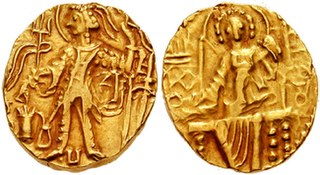 W
WVasudeva III was possibly the son of Vasudeva II and a ruler of the Kushan Empire c. 360-365 CE.
 W
WVima Kadphises was a Kushan emperor from approximately 90–100 CE. According to the Rabatak inscription, he was the son of Vima Takto and the father of Kanishka.
 W
WVima Takto or Vima Taktu was a Kushan emperor who reigned c. 80–90 CE.
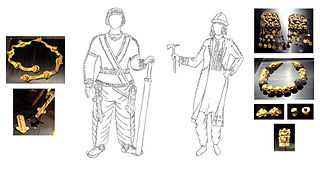 W
WYemshi Tepe, also Emchi-Tepe or Imshik, is an ancient circular fortress in Afghanistan, 5 kilometers to the northeast of the city of Sheberghan. According to the Soviet archaeologist Sarianidi in 1985:Its tall, mighty walls pierced by several narrow gateways were fortified by defence towers and formed an impregnable ring .... Inside, in the northern section, stood the citadel, at whose foot were the remains of what had apparently been the palatial residence of the local ruler. Some 50 acres in area, this ancient city, indubitably a vast one for its time, comprised, along with the small villages of its sprawling suburbs, the administrative seat of the entire neighbouring region, once part of the legendary empire of Bactria.
 W
WThe Yuezhi were an ancient people first described in Chinese histories as nomadic pastoralists living in an arid grassland area in the western part of the modern Chinese province of Gansu, during the 1st millennium BC. After a major defeat by the Xiongnu in 176 BC, the Yuezhi split into two groups migrating in different directions: the Greater Yuezhi and Lesser Yuezhi.